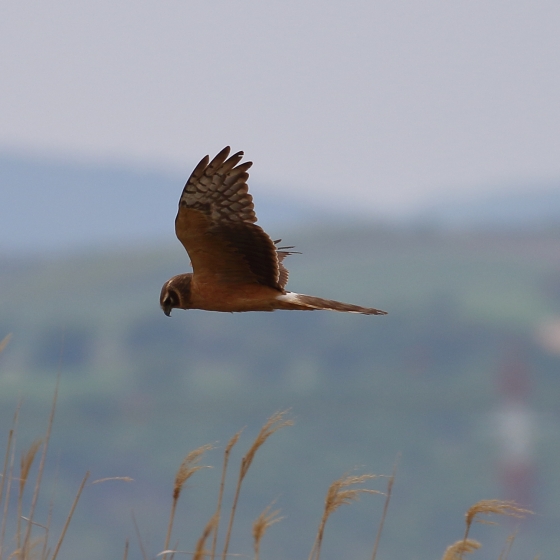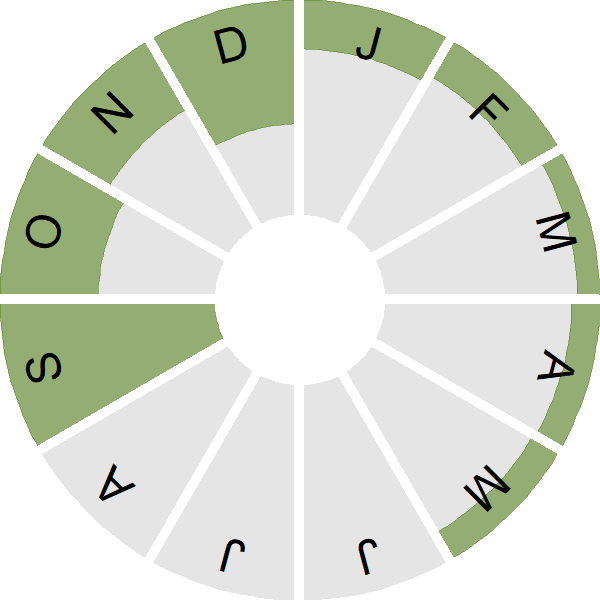Pallid Harrier

Introduction
Similar to but paler than a Hen Harrier, with fewer black primaries, this is a very rare visitor from eastern Europe.
Most records concern juveniles seen in autumn and some remain through winter. Identification is complicated by the presence of Hen×Pallid Harrier hybrids.

Key Stats
Status and Trends
Conservation Status
Population Size
Population Change
Population trends of this scarce species are not routinely monitored.
Distribution
This species is a rare vagrant and was recorded during Bird Atlas 2007–11 as shown on the map.
Occupied 10-km squares in UK
or view it on Bird Atlas Mapstore.
or view it on Bird Atlas Mapstore.
European Distribution Map
Distribution Change
This vagrant is too rarely reported to map distribution change.
Seasonality
Pallid Harrier is a rare vagrant, mostly recorded in autumn and winter.
Weekly pattern of occurrence
The graph shows when the species is present in the UK, with taller bars indicating a higher likelihood of encountering the species in appropriate regions and habitats.

Movement
Britain & Ireland movement
Foreign locations of birds ringed or recovered in Britain & Ireland
Dots show the foreign destinations of birds ringed in Britain & Ireland, and the origins of birds ringed overseas that were subsequently recaptured, resighted or found dead in Britain & Ireland. Dot colours indicate the time of year that the species was present at the location.
- Winter (Nov-Feb)
- Spring (Mar-Apr)
- Summer (May-Jul)
- Autumn (Aug-Oct)

Biology
Survival and Longevity
Survival is shown as the proportion of birds surviving from one year to the next and is derived from bird ringing data. It can also be used to estimate how long birds typically live.
View number ringed each year in the Online Ringing Report.
Classification, names and codes
Classification and Codes
- Order: Accipitriformes
- Family: Accipitridae
- Scientific name: Circus macrourus
- Authority: SG Gmelin, 1770
- BTO 2-letter code: HI
- BTO 5-letter code: PALHA
- Euring code number: 2620
Alternate species names
- Catalan: arpella pàl·lida russa
- Czech: moták stepní
- Danish: Steppehøg
- Dutch: Steppekiekendief
- Estonian: stepi-loorkull
- Finnish: arosuohaukka
- French: Busard pâle
- German: Steppenweihe
- Hungarian: fakó rétihéja
- Icelandic: Fölheiðir
- Italian: Albanella pallida
- Latvian: (stepes lija), garastes lija
- Lithuanian: stepine linge
- Norwegian: Steppehauk
- Polish: blotniak stepowy
- Portuguese: tartaranhão-pálido
- Slovak: kana stepná
- Slovenian: stepski lunj
- Spanish: Aguilucho papialbo
- Swedish: stäpphök
- Welsh: Bod Llwydwyn

